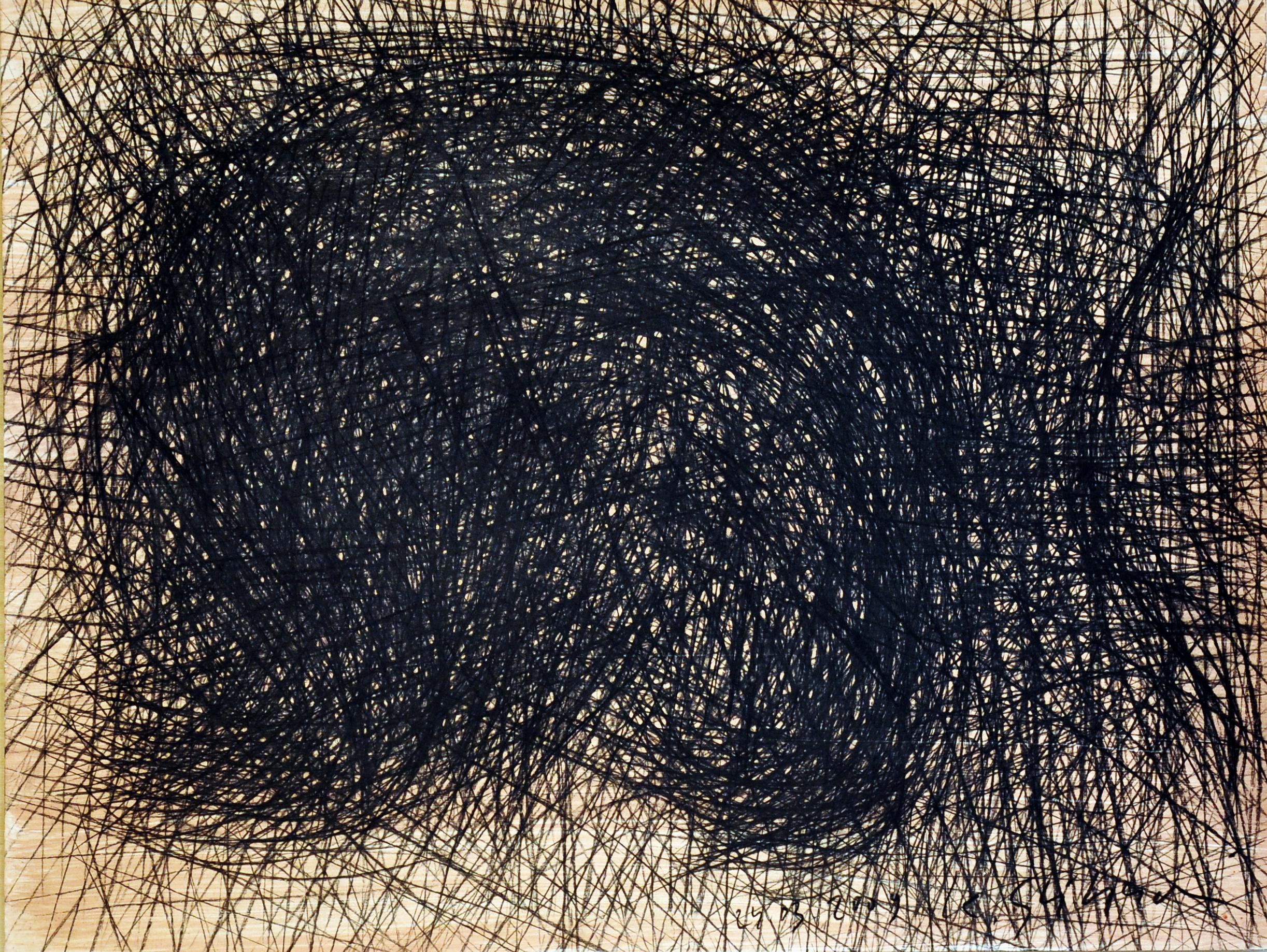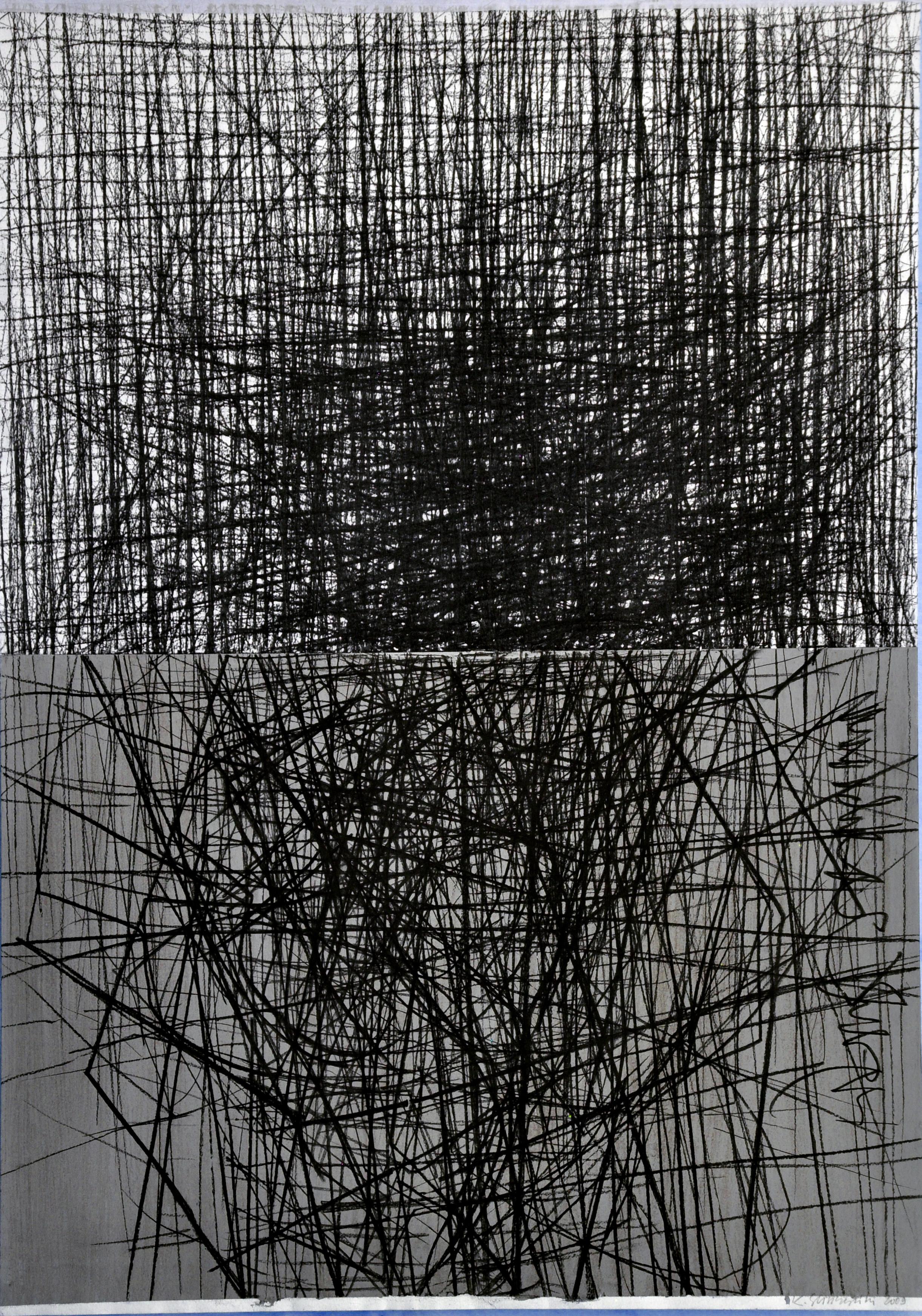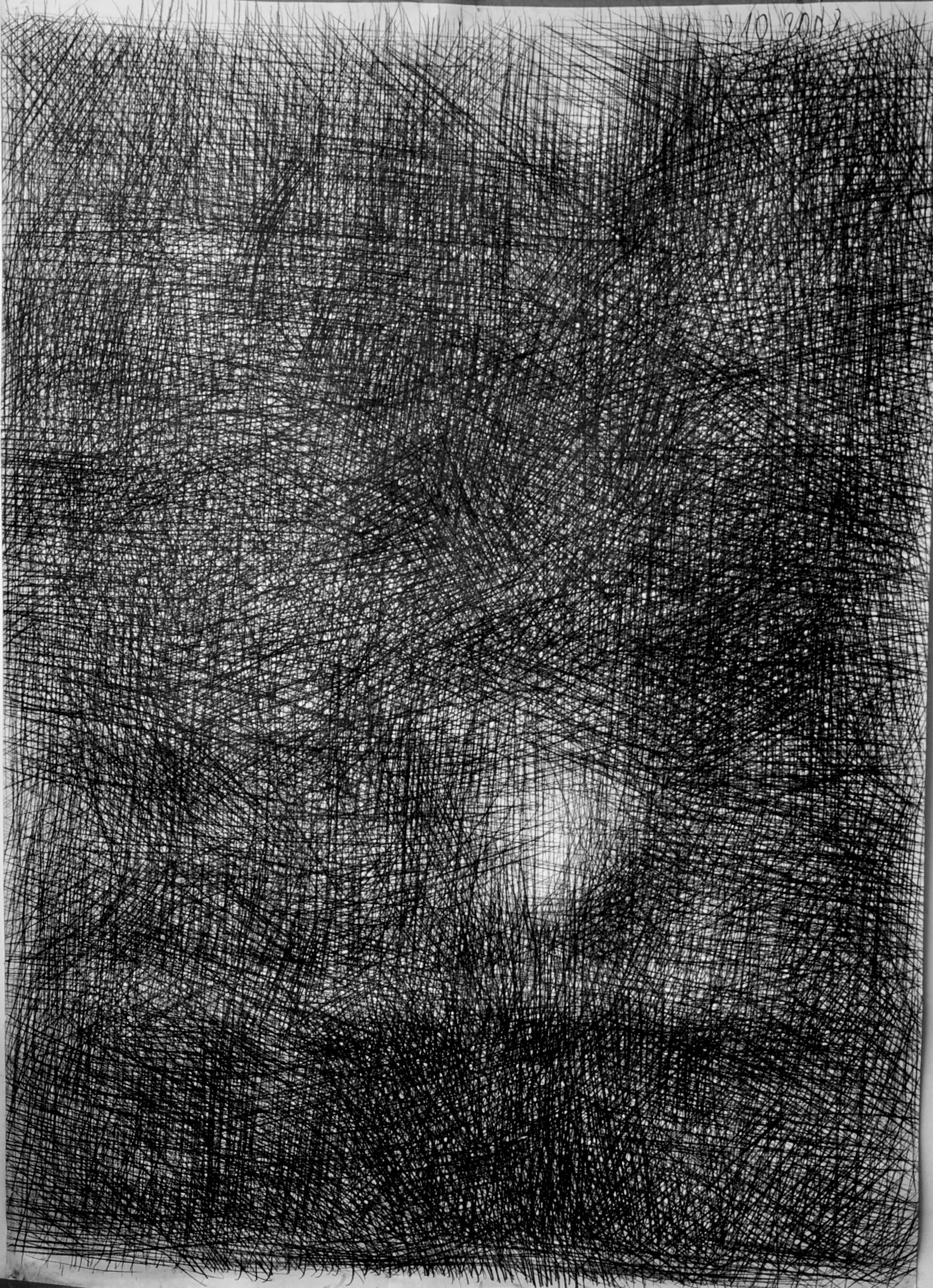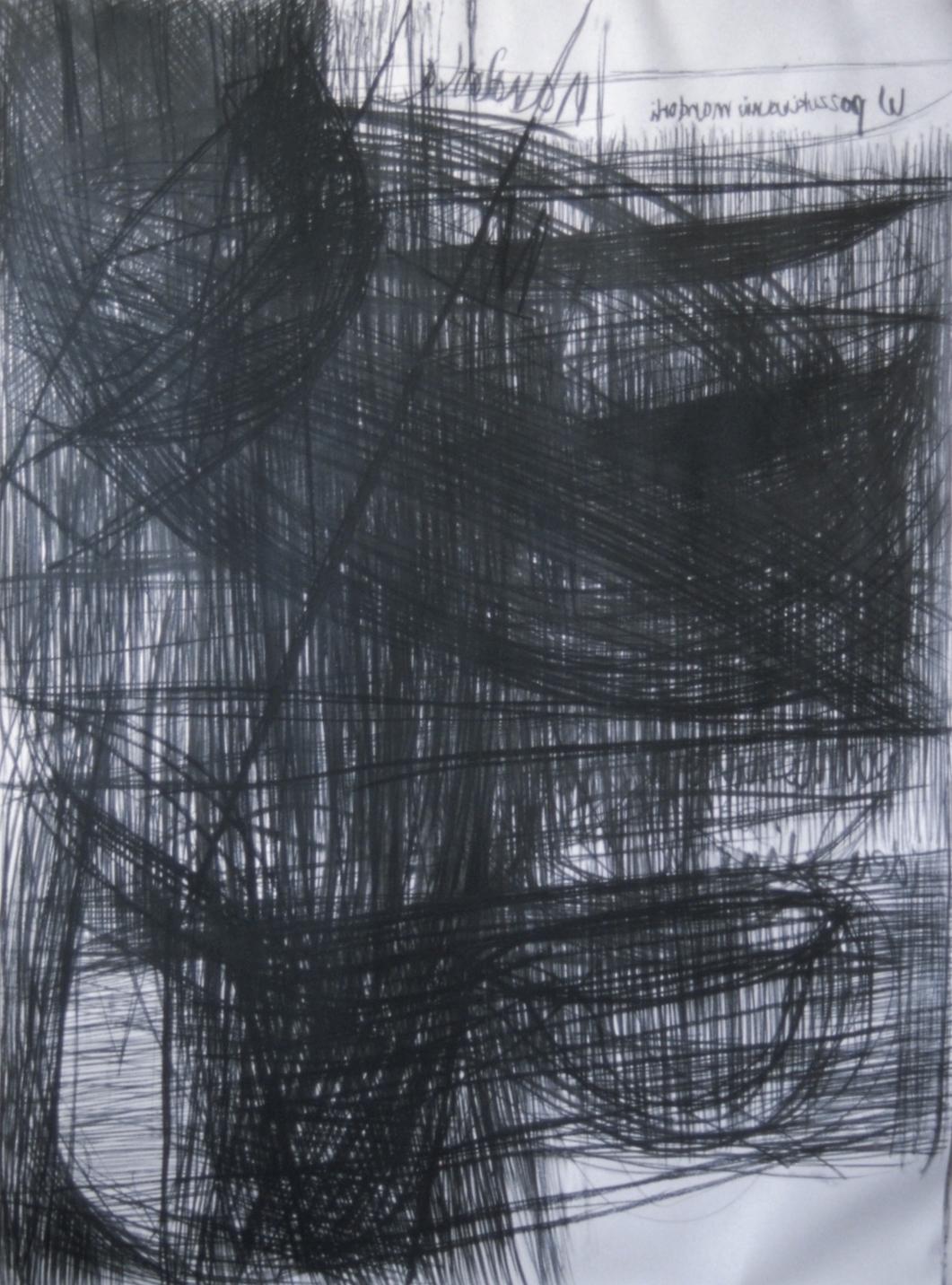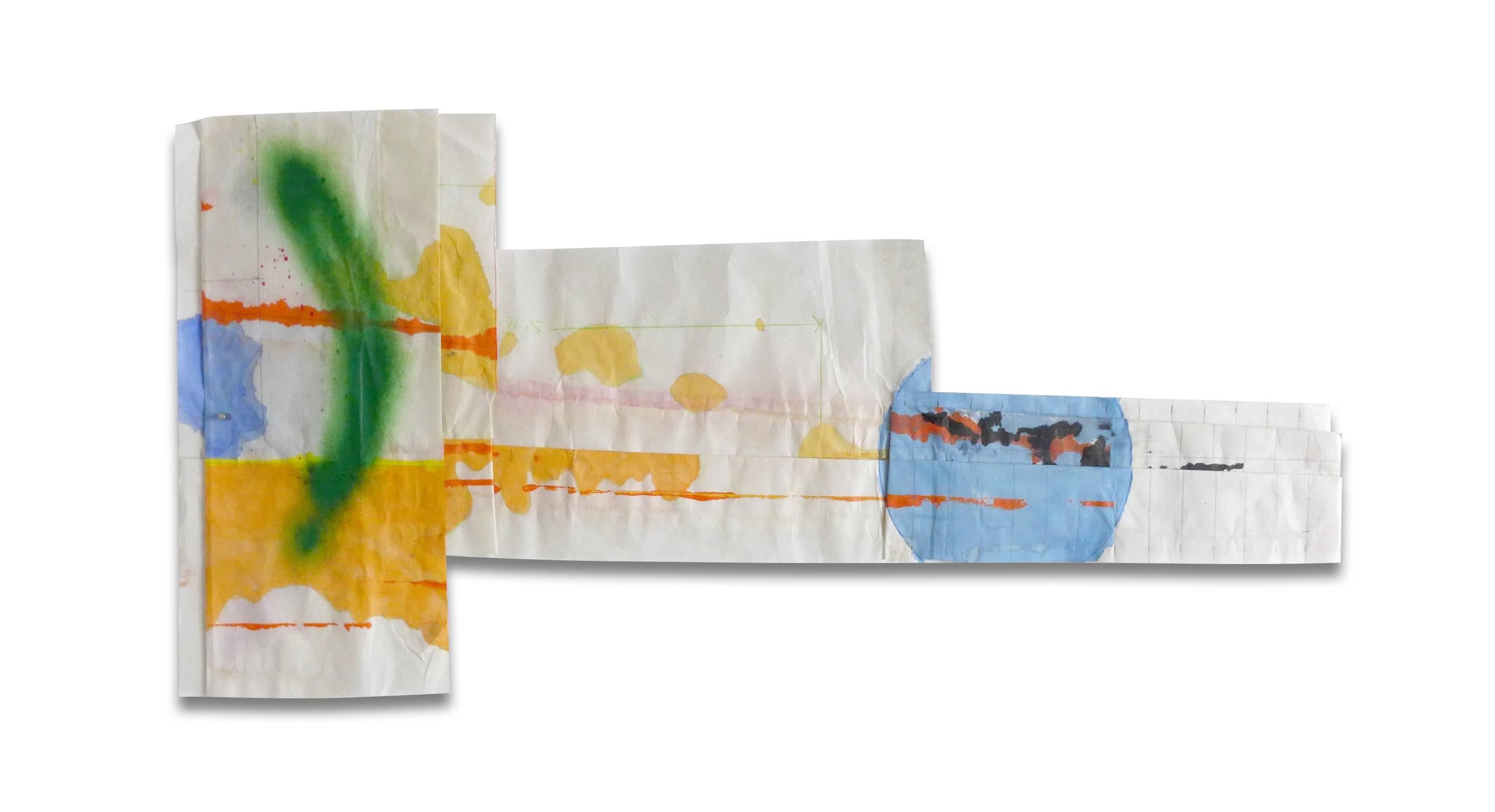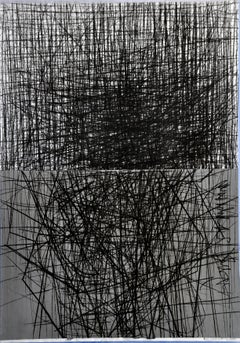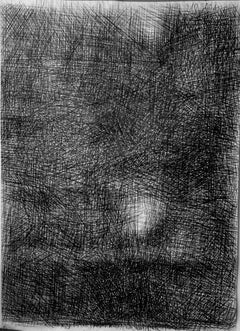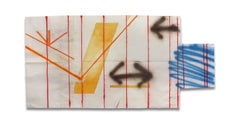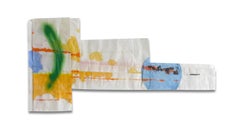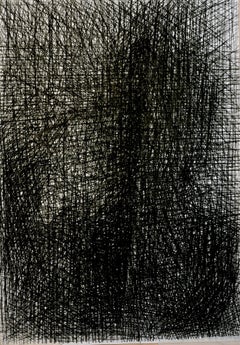
Shadow - Expressive Charcoal On Paper Painting, Black White Drawing
View Similar Items
Want more images or videos?
Request additional images or videos from the seller
1 of 5
Krzysztof GliszczyńskiShadow - Expressive Charcoal On Paper Painting, Black White Drawing2009
2009
About the Item
- Creator:Krzysztof Gliszczyński (1962, Polish)
- Creation Year:2009
- Dimensions:Height: 39.38 in (100 cm)Width: 27.56 in (70 cm)
- Medium:
- Movement & Style:
- Period:
- Condition:
- Gallery Location:Salzburg, AT
- Reference Number:1stDibs: LU1035311358752
About the Seller
5.0
Platinum Seller
These expertly vetted sellers are 1stDibs' most experienced sellers and are rated highest by our customers.
Established in 2005
1stDibs seller since 2018
136 sales on 1stDibs
More From This SellerView All
- Untitled 1 - Expressive Charcoal On Paper Painting, Black White DrawingBy Krzysztof GliszczyńskiLocated in Salzburg, ATThe paper of the work is not yellowed, there is a applied yellowed primer under the drawing Krzysztof Gliszczyński is Professor for painting o...Category
Early 2000s Conceptual Abstract Drawings and Watercolors
MaterialsPaper, Charcoal
- TWO SPACES - Expressive Charcoal On Paper Painting, Black White DrawingBy Krzysztof GliszczyńskiLocated in Salzburg, ATThe work is on 1 paper. Krzysztof Gliszczyński is Professor for painting on Academy of fine arts Gdansk. The artwork is unframed and will be...Category
Early 2000s Conceptual Abstract Drawings and Watercolors
MaterialsPaper, Charcoal
- Light, Series Drawing From Israel - Large Format, Charcoal On PaperBy Krzysztof GliszczyńskiLocated in Salzburg, ATThe artwork is unframed and will be shipped rolled in a tube Krzysztof Gliszczyński is Professor for painting on Academy of fine arts Gdansk. Krzysztof Gliszczyński born in Miastko in 1962. Graduated from the Gdańsk Academy of Fine Arts in 1987 in the studio of Prof. Kazimierz Ostrowski. Between 1995 and 2002 founder and co-manager of Koło Gallery in Gdańsk. lnitiator of the Kazimierz Ostrowski Award, con-ferred by the Union of Polish Artists and Designers (ZPAP), Gdańsk Chapter. Dean of the Painting Faculty of the Gdańsk Academy of Fine Arts in the years 2008-2012. Vice Rector for Development and Cooperation of the Gdańsk Academy of Fine Arts in the years 2012-2016. Obtained a professorship in 2011. Currently head of the Third Painting Studio of the Painting Faculty of the Gdańsk Academy of Fine Arts. He has taken part in a few dozen exhibitions in Poland and abroad. He has received countless prizes and awards for his artistic work. He is active in the field of painting, drawing, objects, and video. Artist Statement In the 1990s I started collecting flakes of paint – leftovers from my work. I would put fresh ones in wooden formworks, dried ones in glass containers. They constituted layers of investigations into the field of painting, enclosed in dated and numbered cuboids measuring 47 × 10.5 × 10.5 cm. I called those objects Urns. In 2016, I displayed them at an exhibition, moulding a single object out of all the Urns. The Urns inspired me to redefine the status of my work as a painter. In order to do it, I performed a daunting task of placing the layers of paint not in an urn, but on a canvas, pressing each fresh bit of paint with my thumb. In the cycle of paintings Autoportret a’retour, the matter was transferred from painting to painting, expanding the area of each consecutive one. Together, the bits, the residua of paint, kept alive the memory of the previous works. It was a stage of the atomization of the painting matter and its alienation from the traditional concepts and aesthetic relations. Thus, the cycle of synergic paintings was created, as I called them, guided by the feeling evoked in me by the mutually intensifying flakes of paint. The final aesthetic result of the refining of the digested matter was a consequence of the automatism of the process of layering, thumb-pressing, and scraping off again. Just like in an archaeological excavation, attempts are made to unite and retrieve that which has been lost. This avant-garde concept consists in transferring into the area of painting of matter, virtually degraded and not belonging to the realm of art. And yet the matter re-enters it, acquiring a new meaning. The matter I created, building up like lava, became my new technique. I called it perpetuum pictura – self-perpetuated painting. Alchemical concepts allowed me to identify the process inherent in the emerging matter, to give it direction and meaning. In a way, I created matter which was introducing me into the pre-symbolic world – a world before form, unnamed. From this painterly magma, ideas sprung up, old theories of colour and the convoluted problem of squaring the circle manifested themselves again. Just like Harriot’s crystal refracted light in 1605, I tried to break up colour in the painting Iosis. Paintings were becoming symptoms, like in the work Pulp fiction, which at that time was a gesture of total fragmentation of matter and of transcending its boundaries, my dialogue with the works of Jackson Pollock and the freedom brought by his art. The painting Geometrica de physiologiam pictura contains a diagram in which I enter four colours that constitute an introduction to protopsychology, alchemical transmutation, and the ancient theory of colour. It this work I managed to present the identification of the essence of human physiology with art. But the essential aspect of my considerations in my most recent paintings is the analysis of abstraction, the study of its significance for the contemporary language of art and the search for the possibilities of creating a new message. For me, abstraction is not an end in itself, catering to the largely predicable expectations of the viewers. To study the boundary between visibility and invisibility, like in the work Unsichtbar, is to ask about the status of the possibilities of the language of abstraction. The moment of fluidity which I am able to attain results from the matter – matter...Category
Early 2000s Conceptual Abstract Drawings and Watercolors
MaterialsPaper, Charcoal
- Mandorla - Large Format Charcoal On Paper, Black White DrawingBy Krzysztof GliszczyńskiLocated in Salzburg, ATKrzysztof Gliszczyński is Professor for painting on Academy of fine arts Gdansk. The artwork is unframed and will be shipped rolled in a tube Artist Statement In the 1990s I started collecting flakes of paint – leftovers from my work. I would put fresh ones in wooden formworks, dried ones in glass containers. They constituted layers of investigations into the field of painting, enclosed in dated and numbered cuboids measuring 47 × 10.5 × 10.5 cm. I called those objects Urns. In 2016, I displayed them at an exhibition, moulding a single object out of all the Urns. The Urns inspired me to redefine the status of my work as a painter. In order to do it, I performed a daunting task of placing the layers of paint not in an urn, but on a canvas, pressing each fresh bit of paint with my thumb. In the cycle of paintings Autoportret a’retour, the matter was transferred from painting to painting, expanding the area of each consecutive one. Together, the bits, the residua of paint, kept alive the memory of the previous works. It was a stage of the atomization of the painting matter and its alienation from the traditional concepts and aesthetic relations. Thus, the cycle of synergic paintings was created, as I called them, guided by the feeling evoked in me by the mutually intensifying flakes of paint. The final aesthetic result of the refining of the digested matter was a consequence of the automatism of the process of layering, thumb-pressing, and scraping off again. Just like in an archaeological excavation, attempts are made to unite and retrieve that which has been lost. This avant-garde concept consists in transferring into the area of painting of matter, virtually degraded and not belonging to the realm of art. And yet the matter re-enters it, acquiring a new meaning. The matter I created, building up like lava, became my new technique. I called it perpetuum pictura – self-perpetuated painting. Alchemical concepts allowed me to identify the process inherent in the emerging matter, to give it direction and meaning. In a way, I created matter which was introducing me into the pre-symbolic world – a world before form, unnamed. From this painterly magma, ideas sprung up, old theories of colour and the convoluted problem of squaring the circle manifested themselves again. Just like Harriot’s crystal refracted light in 1605, I tried to break up colour in the painting Iosis. Paintings were becoming symptoms, like in the work Pulp fiction, which at that time was a gesture of total fragmentation of matter and of transcending its boundaries, my dialogue with the works of Jackson Pollock and the freedom brought by his art. The painting Geometrica de physiologiam pictura contains a diagram in which I enter four colours that constitute an introduction to protopsychology, alchemical transmutation, and the ancient theory of colour. It this work I managed to present the identification of the essence of human physiology with art. But the essential aspect of my considerations in my most recent paintings is the analysis of abstraction, the study of its significance for the contemporary language of art and the search for the possibilities of creating a new message. For me, abstraction is not an end in itself, catering to the largely predicable expectations of the viewers. To study the boundary between visibility and invisibility, like in the work Unsichtbar, is to ask about the status of the possibilities of the language of abstraction. The moment of fluidity which I am able to attain results from the matter – matter...Category
Early 2000s Conceptual Abstract Drawings and Watercolors
MaterialsPaper, Charcoal
- Untitled 06 - Series 2019, Contemporary Abstract Painting, Textile LightnessBy Tomasz PrymonLocated in Salzburg, ATAbout Prymon’s Exhibition Dopaminum and his paintings: ”Dopaminum” - Tomasz Prymon Dopamine – colloquially referred to as the hormone of love and happiness. Why is this organic che...Category
2010s Contemporary Abstract Paintings
MaterialsAcrylic, Handmade Paper
- Untitled 35 - Series 2019, Contemporary Abstract Painting, Textile LightnessBy Tomasz PrymonLocated in Salzburg, ATAbout Prymon’s Exhibition Dopaminum and his paintings: ”Dopaminum” - Tomasz Prymon Dopamine – colloquially referred to as the hormone of love and happiness. Why is this organic che...Category
2010s Contemporary Abstract Paintings
MaterialsAcrylic, Handmade Paper
You May Also Like
- Porch drawing 2 (Abstract Painting)By Peter SorianoLocated in London, GBPorch drawing 2 (Abstract Painting) Spray paint, pencil, ink, watercolor on paper. Unframed. Peter Soriano works on relatively large sheets of Japanese paper with a tendency to work from something observed, ideally around him. He tends to be “in” the configuration that is the subject of the work. Soriano is fond of “systems” objects attached to other objects, such as the wiring plan of a room. But very often there are other shapes that play a role in the work. The artist would fold and rework a piece a number of times. Folding seems to concentrate the dialogue that attracts him. Reworking is part of his nature. The finished work normally is the result of this ebb and flow between the heightening and repositioning the relationship between forms. This drawing highlights the configurations of a large porch that Soriano used as a studio in Maine during Summer 2010. Peter Soriano is a Philippines-born French-American abstract artist who divides his time between New York City and Penobscot, Maine. Although he began his career as a sculptor, his work is now two-dimensional. He is known for his bold spray-painted wall murals...Category
2010s Conceptual Abstract Paintings
MaterialsPaper, Ink, Spray Paint, Watercolor, Pencil
- Berlin (Abstract Painting)By Peter SorianoLocated in London, GBBerlin (Abstract Painting) Spray paint, pencil, ink, watercolor on paper. Unframed. Peter Soriano works on relatively large sheets of Japanese paper with a tendency to work from so...Category
2010s Conceptual Abstract Paintings
MaterialsPaper, Ink, Spray Paint, Watercolor, Pencil
- Paris - Ober (Blue Circle) (Abstract painting)By Peter SorianoLocated in London, GBParis - Ober (Blue Circle) (Abstract painting) Spray paint, pencil, ink, watercolor on paper. Unframed. Peter Soriano works on relatively large sheets of Japanese paper with a ten...Category
2010s Conceptual Abstract Drawings and Watercolors
MaterialsPaper, Ink, Spray Paint, Watercolor, Pencil
- Colby 12 (Abstract painting)By Peter SorianoLocated in London, GBColby 12 (Abstract painting) Spray paint, pencil, ink, watercolor on paper. Unframed. Peter Soriano works on relatively large sheets of Japanese paper with a tendency to work from ...Category
2010s Conceptual Abstract Paintings
MaterialsPaper, Ink, Spray Paint, Watercolor, Pencil
- Paris - Ober (Blue Circle) (Abstract painting)By Peter SorianoLocated in London, GBSpray paint, pencil, ink, watercolor on paper. Unframed. Peter Soriano works on relatively large sheets of Japanese paper with a tendency to work from something observed, ideally a...Category
2010s Conceptual Abstract Drawings and Watercolors
MaterialsPaper, Ink, Spray Paint, Watercolor, Pencil
- Paris - Ober (Blue Circle) (Abstract painting)By Peter SorianoLocated in London, GBParis - Ober (Blue Circle) (Abstract painting) Spray paint, pencil, ink, watercolor on paper. Unframed. Peter Soriano works on relatively large sheets of Japanese paper with a ten...Category
2010s Conceptual Abstract Drawings and Watercolors
MaterialsPaper, Ink, Spray Paint, Watercolor, Pencil
Recently Viewed
View AllMore Ways To Browse
Shadow And Light Paintings
New Charcoal
Stage Drawing
Concept Drawing
Ancient Drawing
Charcoal On Paper Drawing
Artwork Charcoal
Drawing 1962
Paper Used For Charcoal Drawing
Paper Strip Art
Charcoal Abstract On Paper
Rolling Paper
Charcoal Drawing Study
Contemporary Abstract Watercolor On Canvas
House Of Charcoal
Bear Drawing
Charcoal Black White Painting
Charcoal Painting Black And White
